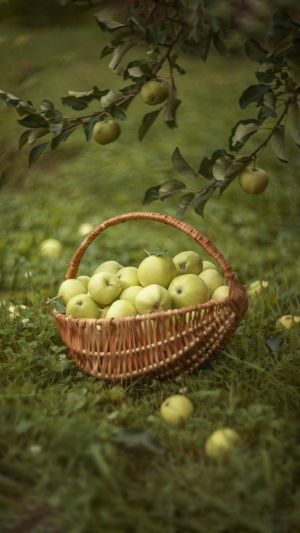Green apples are often viewed through a simplistic lens as being unripe.
However, this assumption overlooks the complexity behind apple ripening, which involves multiple factors such as variety, environmental conditions, and picking time.
This article delves into the nuances of green apples, addressing whether they are indeed unripe and examining the various influences that affect their ripening process.
<h3>Varieties of Green Apples</h3>
The colour of an apple is not a straightforward indicator of its ripeness. Different apple varieties exhibit diverse ripening behaviors; some remain green even when fully mature.
A prime example is the Granny Smith apple. Known for their tart flavor and crisp texture, Granny Smith apples retain their green colour when ripe. This variety does not undergo a colour change as it matures, meaning its green appearance is a sign of ripeness rather than immaturity.
Other varieties, such as Golden Delicious and Pippin, can also appear green when ripe. The Golden Delicious apple, for instance, may have a yellow-green hue at peak ripeness.
Similarly, the Pippin apple can maintain a green colouration when mature. Thus, it is unscientific to judge the maturity of apples based solely on their colour. A comprehensive analysis must consider the specific characteristics of each variety.
<h3>Influence of Environmental Factors</h3>
Environmental conditions significantly impact the ripening process and the color of apples. Sunlight, temperature, and soil quality play crucial roles in apple development.
Apples grown in sunny, warm climates typically ripen faster and develop more red or yellow pigments. In contrast, apples grown in more relaxed or shadier environments may remain green even as they ripen.
Sunlight, particularly ultraviolet (UV) rays, triggers pigment changes in apple skins. UV exposure promotes the breakdown of chlorophyll, the green pigment, and the development of anthocyanins, which are responsible for red and purple hues.
Therefore, apples deprived of sufficient sunlight may retain their green color despite being ripe. This highlights the importance of environmental factors in determining apple color and ripeness.
<h3>The Role of Picking Time</h3>
The timing of picking apples is another critical factor influencing their color and ripeness. Generally, unripe apples are more complex and tart, while ripe apples are sweeter and softer.
In commercial apple production, apples are often harvested slightly underripe to prevent over-ripening or spoilage during transportation. Consequently, some of the green apples in supermarkets may be underripe.
In contrast, home growers and small farmers typically base their picking times on personal experience and specific needs, often opting to harvest apples when they are fully ripe.
Even if an apple remains green, its interior may have reached optimal taste and nutritional value. Thus, the picking time can significantly affect green apples' perceived and actual ripeness.
<h3>Indicators of Apple Ripeness</h3>
Aside from color, several other indicators determine the ripeness of apples. One standard method is the firmness test. Ripe apples usually yield slightly to gentle pressure, while unripe ones remain hard.
Another indicator is the fruit's aroma; ripe apples typically emit a sweet, fragrant smell. Additionally, the taste test can be definitive—ripe apples are sweet and juicy, whereas unripe ones are often tart and dry.
The starch-to-sugar conversion is also a reliable marker of ripeness. As apples mature, starches within the fruit convert to sugars, making the fruit sweeter.
This conversion can be assessed using an iodine test, which reveals the presence of starch. Ripe apples will react less to iodine, indicating lower starch levels and higher sugar content.
<h3>Conclusion</h3>
In conclusion, the assumption that green apples are unripe is an oversimplification. The ripeness of green apples is influenced by various factors, including variety, environmental conditions, and picking time.
Recognizing these factors allows a more accurate assessment of an apple's ripeness beyond its color. By broadening our understanding and appreciation of green apples, we can better enjoy their unique qualities and make more informed choices in our consumption and culinary practices.





